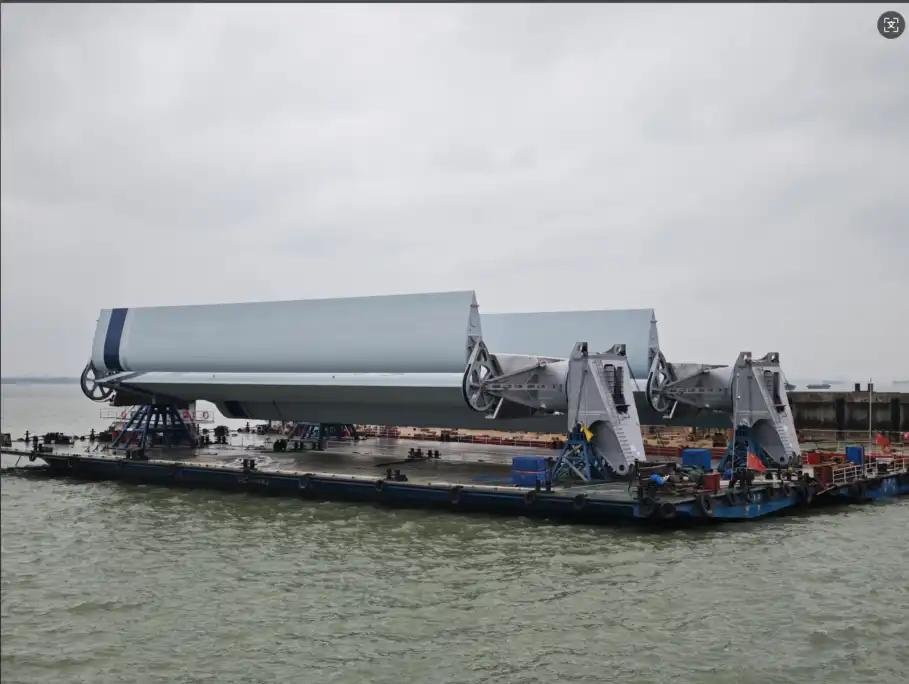WAPS quick deployment techniques
Efficient deployment of Wind Power Propulsion systems is essential for maximizing their benefits. TSC, a leading brand in marine technology, has developed innovative techniques to streamline this process. One key aspect is the use of advanced hydraulic systems that allow for rapid unfurling of the sails. These systems are designed to operate smoothly even in challenging weather conditions, ensuring reliability and consistency in deployment.
Automated control systems for optimal performance
Modern Wind-Assisted Propulsion Systems (WAPS) integrate advanced automated control systems that enhance both efficiency and ease of deployment. These systems collect real-time data such as wind speed, direction, and the vessel's characteristics, then calculate the most effective sail configuration for maximum energy capture. By automating these processes, the systems significantly reduce human intervention, enabling quicker sail adjustments. This automation ensures that the sails are optimally positioned as soon as they are deployed, enhancing the overall performance of the vessel without the need for manual calculations or adjustments, thus improving operational efficiency and fuel savings.
Training and crew preparedness
Despite the significant advancements in technology, the human factor remains a critical element in the effective operation of WAPS. Proper training of the crew is essential for ensuring smooth and safe deployment of the sails. Crew members must be familiar with the system's operations, including how to adjust sails quickly and respond to various operational scenarios. Regular drills and simulated exercises are vital for preparing the crew to handle both routine maneuvers and emergency situations. This ensures that the crew can respond efficiently to any challenges that arise, thereby preventing delays and ensuring the safety and effectiveness of the WAPS deployment.
Space-saving stowage solutions for ports
Effective stowage of Wind Power Propulsion systems is crucial for port operations. The challenge lies in designing systems that can be compactly stored without compromising quick deployment capabilities. TSC has developed innovative folding mechanisms that allow WAPS to be stowed with minimal deck space usage.
Compact folding designs
Advancements in engineering have led to the development of Wind-Assisted Propulsion Systems (WAPS) that can be folded into highly compact forms, making them more efficient and adaptable to various vessel types. These innovative designs typically incorporate multi-segment sails that can collapse in an accordion-like fashion or retract into custom-designed housings. This folding mechanism not only saves valuable deck space but also provides additional protection to the sails during port operations, where they are less likely to incur damage. The compact nature of these systems ensures that vessels maintain their ability to optimize wind energy while preserving the practicality and safety of the ship's overall layout.
Integration with vessel structure
Some of the most effective solutions for storing WAPS are those that involve seamlessly integrating the system into the vessel's existing structure. By recessing the folded sails into the deck or superstructure, these systems are kept out of the way during cargo loading and unloading operations, which is essential for maintaining efficient port turnaround times. This integration ensures that the sails do not interfere with daily activities on the vessel, while also making them easily accessible for quick deployment when required. Such design strategies maximize both the operational efficiency and the durability of the propulsion system.
Balancing deployment speed and safety
While rapid deployment of WAPS is desirable for operational efficiency, it must be balanced with safety considerations. CM Energy has developed protocols that prioritize both speed and safety in WAPS operations.
Safety interlocks and fail-safes
Modern WAPS are equipped with multiple safety features to prevent accidents during deployment. These include sensors that detect obstacles or adverse conditions, automatically halting deployment if necessary. Additionally, manual override systems allow crew members to intervene quickly if any issues arise.
Gradual deployment procedures
To ensure safety, many WAPS are designed for gradual deployment. This phased approach allows for continuous monitoring and adjustment throughout the process. It also reduces the risk of sudden wind gusts causing problems during unfurling.
Regular maintenance and inspections
Maintaining the reliability and safety of WAPS requires regular inspections and maintenance. This includes checking mechanical components, hydraulic systems, and control electronics. By ensuring all systems are in optimal condition, the risk of deployment issues is significantly reduced.
In conclusion, the deployment and stowage of Wind-Assisted Propulsion Systems during port operations involve a careful balance of efficiency, space management, and safety considerations. As technology continues to advance, we can expect even more streamlined and effective solutions in this area, further enhancing the viability of wind power in maritime transportation.
For shipping companies looking to reduce fuel costs, improve CII compliance, and adopt cutting-edge green technologies, CM Energy offers state-of-the-art WAPS solutions. Our systems are designed to meet the unique needs of various vessel types, including chemical tankers, Newcastlemax bulk carriers, and LR2 tankers. With a focus on quick ROI and low maintenance, our WAPS are particularly suitable for ferry and coastal vessel owners seeking short-route efficiency and emission-free port maneuvering. Additionally, we provide comprehensive support for newbuild shipyards and design firms, offering integrated WAPS designs for future-proof vessels and partnerships to deliver turnkey green solutions to charterers. Experience the future of maritime propulsion with CM Energy's innovative Wind-Assisted Propulsion Systems. Contact us today at info.cn@cm-energy.com to learn how we can help you navigate towards a more sustainable and efficient future.
References
- International Maritime Organization. (2023). Guidelines for Wind-Assisted Propulsion Systems in Shipping.
- Journal of Marine Engineering & Technology. (2024). Advancements in WAPS Deployment and Stowage Techniques.
- Maritime Safety Committee. (2023). Safety Considerations for Wind-Assisted Propulsion Systems.
- International Journal of Maritime Engineering. (2024). Space-Efficient Designs for WAPS in Modern Vessels.
- Lloyd's Register. (2023). Technical Requirements for Wind-Assisted Propulsion Systems.
- Marine Technology Society Journal. (2024). Optimizing WAPS Performance in Port and Open Sea Operations.


